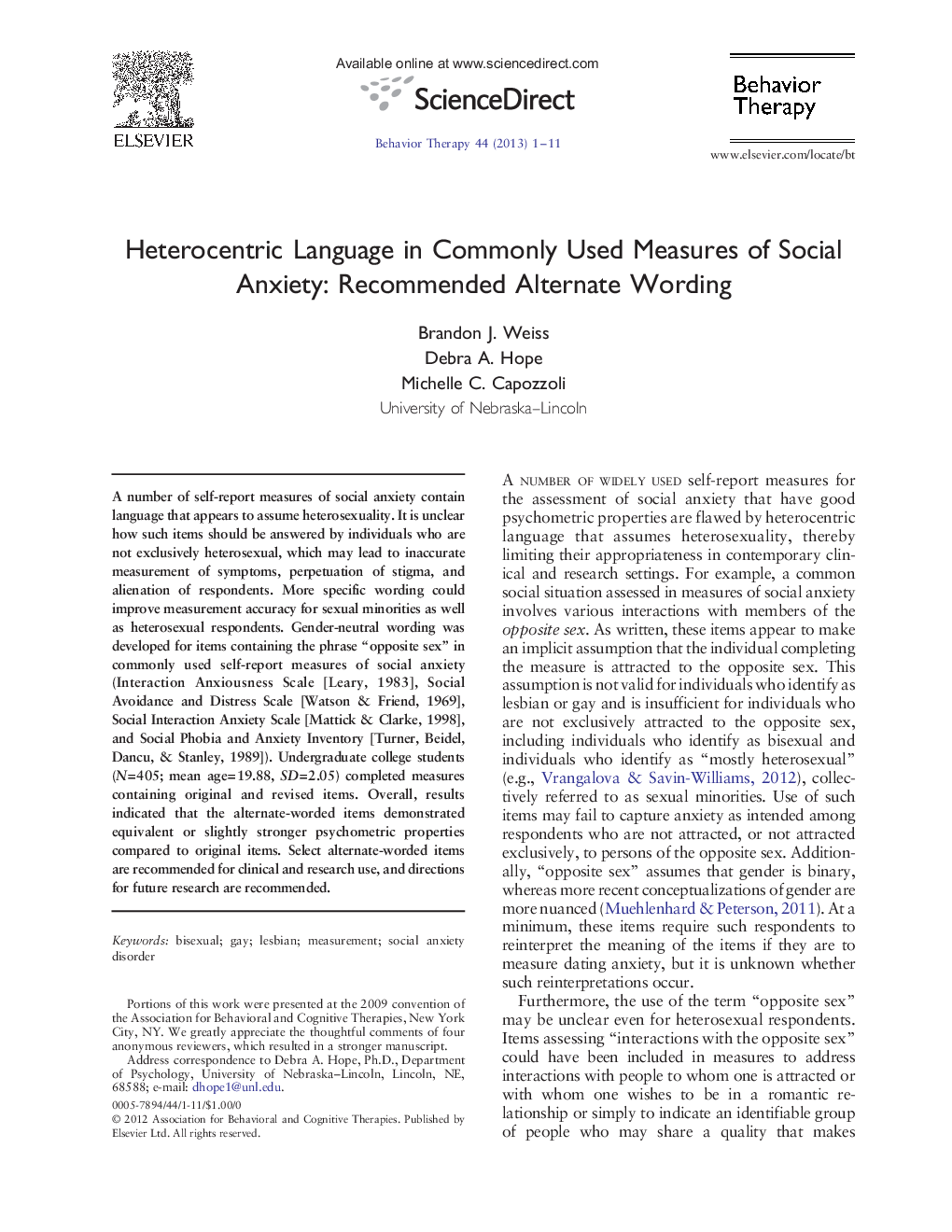| کد مقاله | کد نشریه | سال انتشار | مقاله انگلیسی | نسخه تمام متن |
|---|---|---|---|---|
| 901220 | 915853 | 2013 | 11 صفحه PDF | دانلود رایگان |

A number of self-report measures of social anxiety contain language that appears to assume heterosexuality. It is unclear how such items should be answered by individuals who are not exclusively heterosexual, which may lead to inaccurate measurement of symptoms, perpetuation of stigma, and alienation of respondents. More specific wording could improve measurement accuracy for sexual minorities as well as heterosexual respondents. Gender-neutral wording was developed for items containing the phrase “opposite sex” in commonly used self-report measures of social anxiety (Interaction Anxiousness Scale [Leary, 1983], Social Avoidance and Distress Scale [Watson & Friend, 1969], Social Interaction Anxiety Scale [Mattick & Clarke, 1998], and Social Phobia and Anxiety Inventory [Turner, Beidel, Dancu, & Stanley, 1989]). Undergraduate college students (N = 405; mean age = 19.88, SD = 2.05) completed measures containing original and revised items. Overall, results indicated that the alternate-worded items demonstrated equivalent or slightly stronger psychometric properties compared to original items. Select alternate-worded items are recommended for clinical and research use, and directions for future research are recommended.
► The phrase “opposite sex” in self-report measures of social anxiety limits use.
► Current phrasing is imprecise and promotes heterosexist bias.
► Alternate wording was tested on a large sample of undergraduate students.
► Alternate wording for research and clinical use for common scales is proposed.
Journal: Behavior Therapy - Volume 44, Issue 1, March 2013, Pages 1–11